Shimane Museum of Ancient Izumo will be closed from April 2025 to September 2026 (tentative) due to seismic retrofitting and other renovation works.
The World of Bronze Implements and Great Swords
A large number of bronze implements from the Yayoi period and great swords owned by a local ruling family during the Kofun period were excavated. Take a look at the bronze implements and swords to understand the origin and history of Shimane and the hope of ancient people in Shimane placed in them.
The World of Bronze Implements and Great Swords
The “World of Bronze Implements and Great Swords” gallery displays ancient bronze objects that represent one of the museum’s foremost collections. Dating from the Yayoi period (800 BCE–300 CE), these swords, spearheads, and bells were excavated in Shimane Prefecture. Many of them were found buried together, arranged in rows or in nested stacks, and were most likely created as ritual implements rather than for daily use. There are various theories on why the implements were buried, including the suggestion that they may have been offerings to deities. These artifacts represent some of the largest single deposits of ancient bronze objects found in Japan, and have been designated National Treasures.
In 1984 and 1985, archaeological excavations unearthed 358 swords, 16 spearheads, and 6 bells from the Kōjindani site in Izumo. The swords are all of the same design and, while no formal evidence exists, it is believed they were produced locally given their similarity in shape to other swords found in areas centered around the Izumo region. The exhibit hall displays both the originals and a gleaming wall of replicas that shows how brilliantly the blades would have shone at the time they were buried.
Archaeologists discovered 39 intricately decorated bronze bells during a 1996 excavation at the Kamo-iwakura site in neighboring Unnan. The bells were buried in stacked pairs, with each smaller bell placed inside a larger. One large bell lacks a partner, but the reason remains a mystery.
This section of the museum also displays several decorated great swords that date from the sixth to seventh centuries. These ornate weapons demonstrate the wealth and preeminence of powerful regional families of the time.
(This English-language text was created by the Japanese Tourism Agency.)
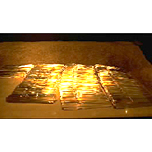
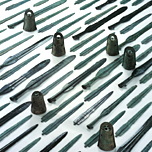
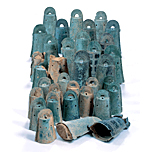
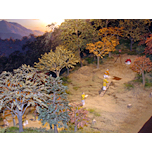
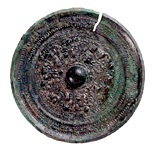
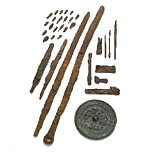
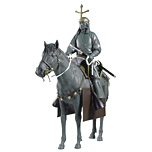
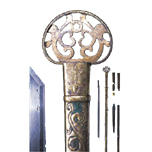
|
Shimane Museum of Ancient Izumo 99-4 kizuki-Higashi, Taisha, Izumo City, Shimane Prefecture, 699-0701 JAPAN - TEL +81-853-53-8600/FAX +81-853-53-5350 | Copyright © 2007 Shimane Museum of Ancient Izumo. All rights reserved. |
